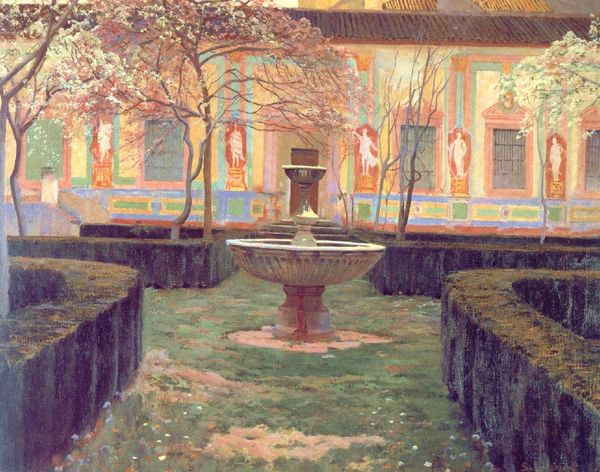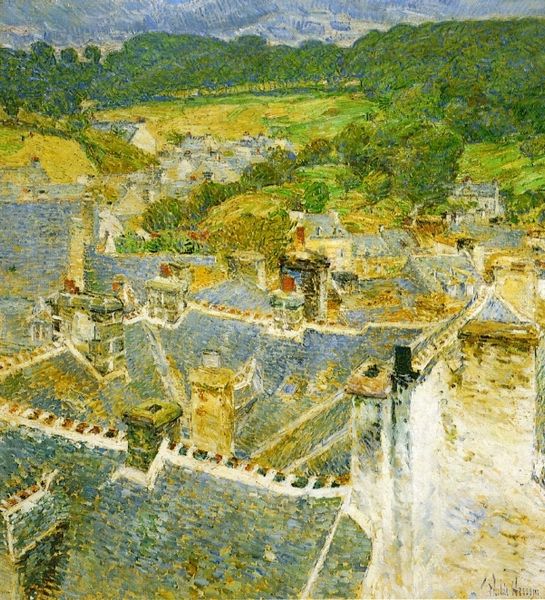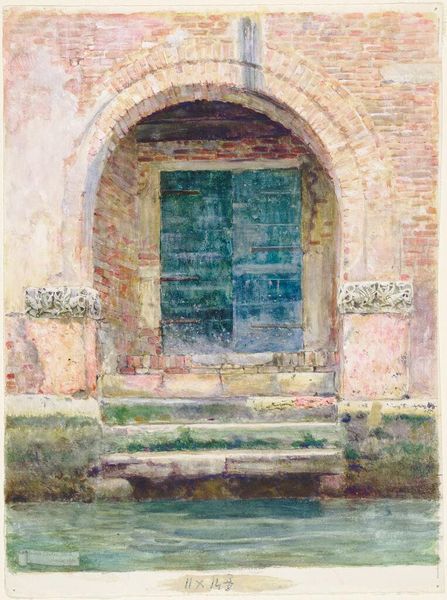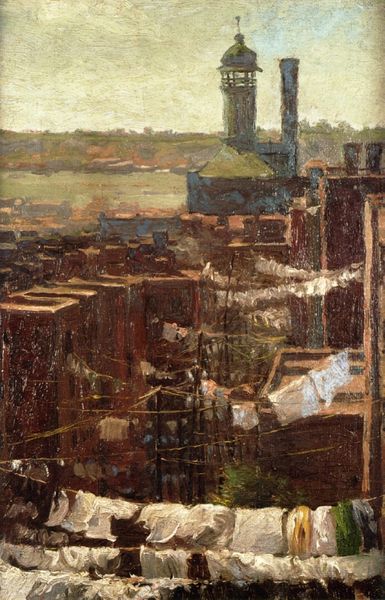
Dimensions: support: 686 x 508 mm frame: 846 x 670 x 85 mm
Copyright: CC-BY-NC-ND 4.0 DEED, Photo: Tate
Editor: Here we have Charles Ginner’s painting *Emergency Water Storage Tank*. It shows a bombed-out building filled with water. It's quite a striking scene. What do you make of this, considering the history it represents? Curator: The painting reveals the brutal intersection of civic infrastructure and wartime violence. Ginner shows us not just damage, but the repurposing of destruction. How does the water, typically a source of life, function within this scene of ruin? Editor: It almost feels like a symbol of resilience, of finding utility even in devastation. Do you think Ginner intended to convey that message? Curator: Perhaps. Or is he showing us the thin line between order and chaos, between what sustains us and what destroys us? Consider the role of water in cleansing and rebirth, and how it might relate to post-war reconstruction. Editor: That makes me see it in a new light. It’s not just about the destruction, but about the potential for renewal, however fragile. Curator: Precisely. It invites us to contemplate the complex relationship between destruction, utility, and ultimately, hope, born from the ashes of conflict.
Comments
tate 6 months ago
⋮
http://www.tate.org.uk/art/artworks/ginner-emergency-water-storage-tank-n05695
Join the conversation
Join millions of artists and users on Artera today and experience the ultimate creative platform.
tate 6 months ago
⋮
The City of London is shown in ruins after prolonged Nazi bombardment. In response to the bombing, the National Fire Service had established emergency water supply tanks across the city. As one writer remembered, ‘the sun sparkling on the surface often lent a new charm to the drab urban scene’. This tank was situated on Upper Thames Street, and the dome of St Pauls Cathedral can be seen in the background. Ginner was an admirer of the Italian artist Canaletto, whose paintings of Venice may have influenced this work. Gallery label, November 2006













